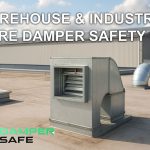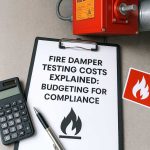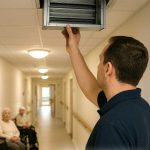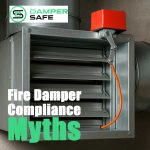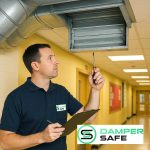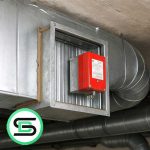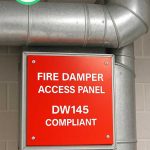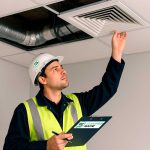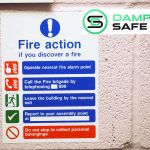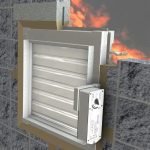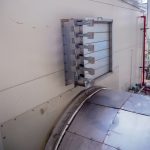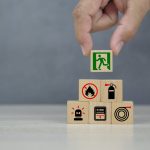How Often Should Fire Dampers Be Tested in the UK?
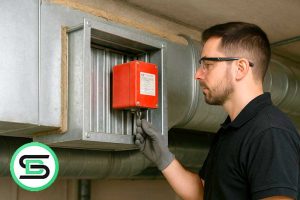
Staying compliant with UK fire regulations means knowing your obligations — and that includes how often fire dampers must be tested and maintained. At Damper Safe Ltd, we’re regularly asked: “How often should fire dampers be tested in the UK?”
In this guide, we answer that question and outline a clear fire damper maintenance and testing schedule for different environments, based on UK legislation and best practice guidance.
What UK Law Says About Fire Damper Testing
Under the Regulatory Reform (Fire Safety) Order 2005, all employers and persons responsible for a non-domestic premises must ensure that fire safety equipment is maintained in an efficient state.
This includes fire and smoke dampers, which must be:
- Accessible
- Functional
- Inspected and tested on a routine schedule
Guidance on how to do this is provided by:
- BS 9999: Code of practice for fire safety in building management
- BS EN 1366-2: European standard on fire resistance of dampers
- BESA DW145: UK-specific guidance on damper installation and maintenance
General Testing Frequency (BS 9999)
According to BS 9999 and DW145:
- All fire dampers must be tested and inspected at least once a year
- Dampers in high-risk environments (e.g., healthcare, catering) may need more frequent testing
- All tests must include a visual inspection, manual drop test, and functionality reset
See our Fire Damper Testing page for service options
Fire Damper Testing Schedules by Sector
Healthcare Facilities (NHS/Private)
- Governed by HTM 03-01 Part B
- Dampers in ventilation systems must be tested every 12 months minimum
- Record-keeping is essential for CQC compliance
- Access panels and infection control must be accounted for
Schools, Colleges and Universities
- Annual testing is the baseline, with work typically conducted outside of term time
- Dampers in labs, kitchens, or plant rooms may require 6-month inspections
- Local authority audits often require evidence of servicing
Office Buildings and Commercial Properties
- Every 12 months per BS 9999
- Shared systems must be tested per floor or tenant
- Landlords or managing agents are typically responsible
Restaurants, Hospitality and Kitchens
- More frequent testing may be required due to grease and particulates
- Bi-annual or quarterly inspections recommended for extraction systems
- Fire-rated dampers should be paired with compliant duct cleaning
What Happens During a Fire Damper Test?
At Damper Safe Ltd, each test includes:
- Visual inspection of damper blade and housing
- Manual or motorised activation
- Clean down and lubrication (if required)
- Reset and reinstallation
- Photograph evidence and digital compliance report
You’ll receive a full compliance certificate for your records and insurers.
Signs You Need Immediate Maintenance
- Stiff or jammed damper blades
- No access to test the unit
- Missing asset records
- Dust, rust, or grease buildup
- Failed drop test
Even if your damper seems to work visually, a proper drop test is essential to confirm function under real conditions.
Get Your Testing Schedule Right with Damper Safe
We help facilities across London, South East and Kent stay compliant through planned preventative maintenance (PPM) schedules tailored to their building type, risk level, and industry regulations.
Benefits include:
- Multi-site testing coordination
- Compliance-ready digital reporting
- Access upgrades and remedial works
- No disruption testing (even out of hours)
Contact us to set up a damper testing plan tailored to your site.
Get in touch & Get A Quote

